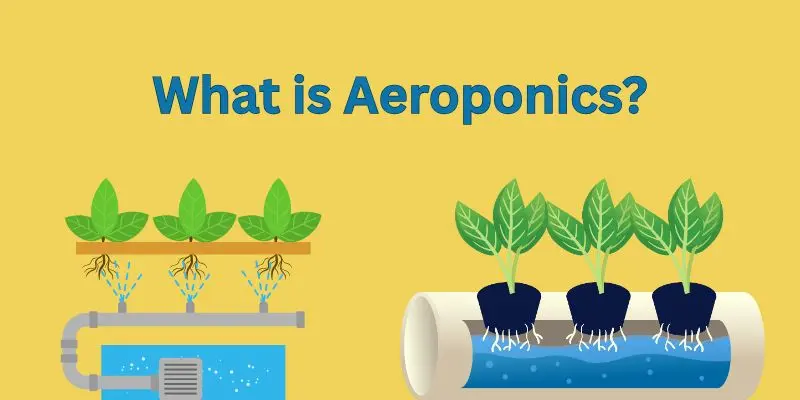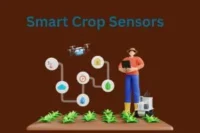Grow Food Without Soil: Discover the Life-Changing Power of Aeroponics
Published: 25 May 2025
In a world where over 33% of arable land has been lost to erosion and pollution in the last 40 years, and where traditional farming consumes nearly 70% of the world’s freshwater, the need for smarter, cleaner, and more sustainable food production has never been greater. Enter aeroponics — a revolutionary method of growing plants without soil, using up to 95% less water, and producing crops up to three times faster than conventional agriculture.
So, guys, without wasting time, let’s jump into the article to learn the Grow Food Without Soil: Discover the Life-Changing Power of Aeroponics
A New Dawn in Home Gardening
- Imagine growing your own food — no soil, no land, no limits.
- Aeroponics offers a futuristic, sustainable way to grow fresh food.
- Perfect for people concerned with:
- Food security
- Climate change
- Healthier eating
What is Aeroponics?
- Soilless farming method where:
- Roots are suspended in air
- Misted with a nutrient-rich water solution
- Plants grow faster due to direct oxygen and nutrient absorption.
- Originally designed by NASA for space missions.

Environmental Benefits of Aeroponics
Reconnect with Nature — Anywhere
- Grow food indoors, even in small spaces.
- Feel emotionally rewarded watching your food grow daily.
Healthier Food for Your Family
- No pesticides or chemicals.
- Serve your family fresh, organic meals straight from your living room.
Protect the Planet While You Eat
- Saves up to 95% of water compared to traditional farming.
- No soil erosion, runoff, or environmental damage.
- Reduces reliance on supply chains and plastic packaging.
How Does Aeroponics Work?
- Step 1: Support System
- Plants are held in net cups or holders with roots exposed.
- Step 2: Nutrient Mist
- A misting system sprays the roots with nutrient solution at timed intervals.
- Step 3: Lighting
- LED grow lights or sunlight stimulate growth and photosynthesis.
- Step 4: Monitoring & Control
- pH levels, mist frequency, and nutrients are regulated (manual or automated).
Real-Life Applications of Aeroponics
- Home kitchens & apartments
- Compact, vertical systems fit small urban spaces.
- Urban rooftops
- Create productive gardens on unused flat surfaces.
- Schools and community centers
- Teach sustainability and self-sufficiency.
- Indoor commercial farming
- Grow large quantities year-round without land.
Why Aeroponics is the Future of Food
- Solves issues like:
- Land shortage
- Water scarcity
- Urban food deserts
- Easily scalable from home gardens to commercial farms.
- Cleaner, faster, and more sustainable than traditional farming.
- Empowers individuals to take food production into their own hands.
How to Start Your Aeroponic Journey Today
- Choose Your Setup
- DIY kits for hobbyists
- Ready-made systems for quick setup
- Get Essential Components
- Nutrient solution
- Grow lights
- Reservoir, pump, and timer system
- Set Up & Monitor
- Position system indoors or on balcony
- Ensure proper misting and lighting
- Start Growing
- Leafy greens, herbs, strawberries, tomatoes — all possible
- Enjoy fresh harvests in 2–4 weeks!
FAQs about Grow Food Without Soil
Here are some of the most frequently asked questions about the Grow Food Without Soil: Discover the Life-Changing Power of Aeroponics
No, they’re different! Hydroponics grows plants in water, while aeroponics uses air and a fine mist to deliver nutrients directly to plant roots. Both are soil-free, but aeroponics gives roots more oxygen.
It sounds strange, but yes! In aeroponics, plant roots hang freely in the air and get sprayed with a nutrient-rich mist. This method actually helps plants grow faster and healthier.
Not exactly. There are different types like low-pressure (DIY-friendly) and high-pressure (more advanced) aeroponics. They all mist the roots, but the pressure and setup vary.
You can definitely use it indoors! Many home aeroponic systems are compact, quiet, and perfect for kitchens or balconies. Just make sure your plants get enough light.
They’re similar but not the same. Fogponics is a type of aeroponics that uses ultra-fine fog instead of mist. This allows nutrients to absorb even faster into the roots.

- Be Respectful
- Stay Relevant
- Stay Positive
- True Feedback
- Encourage Discussion
- Avoid Spamming
- No Fake News
- Don't Copy-Paste
- No Personal Attacks

- Be Respectful
- Stay Relevant
- Stay Positive
- True Feedback
- Encourage Discussion
- Avoid Spamming
- No Fake News
- Don't Copy-Paste
- No Personal Attacks





